Exploring the Databases
Overview
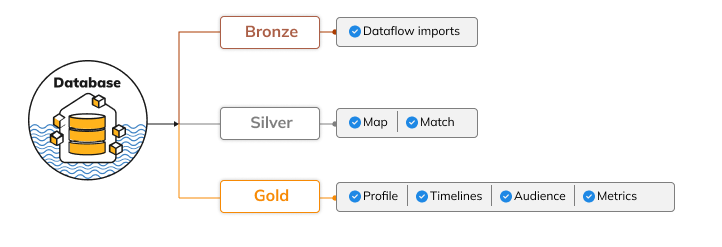
The Databases Explorer in Skypoint Studio provides an intuitive, unified interface to browse all data in your Lakehouse. It leverages Databricks Unity Catalog to organize data assets (catalogs, schemas, and tables) in a hierarchical structure. This upgrade offers a comprehensive view of all schemas and tables under Unity Catalog, greatly improving data visibility, organization, and accessibility within the Lakehouse for a seamless and efficient user experience. All changes made through Lakehouse SQL (such as adding or deleting records in a table) are synced to the Lakehouse in real-time, ensuring the explorer always reflects the latest data.
To select and explore a Database
For every import, Skypoint AI adds a database to its analytical store known as Lakehouse.
- In the left pane, go to the Lakehouse > Explorer.
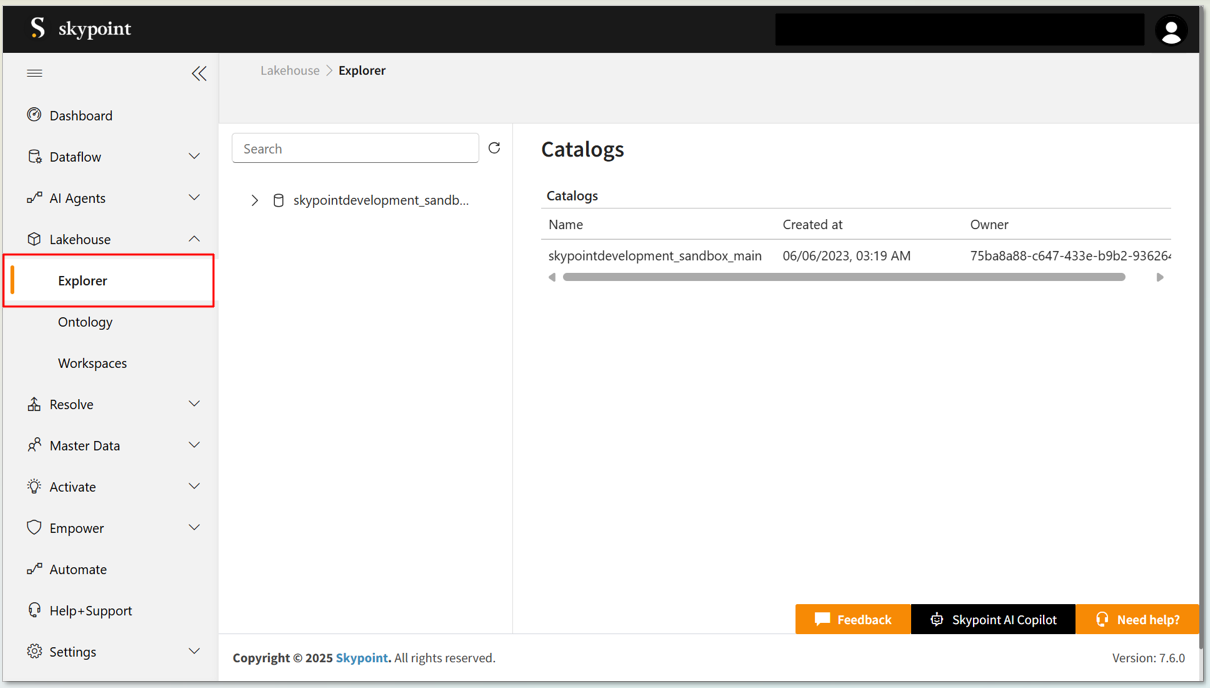
The Catalog page appears
- Click on the Drop-down menu of the Catalog to see the Schemas under the Catalog.
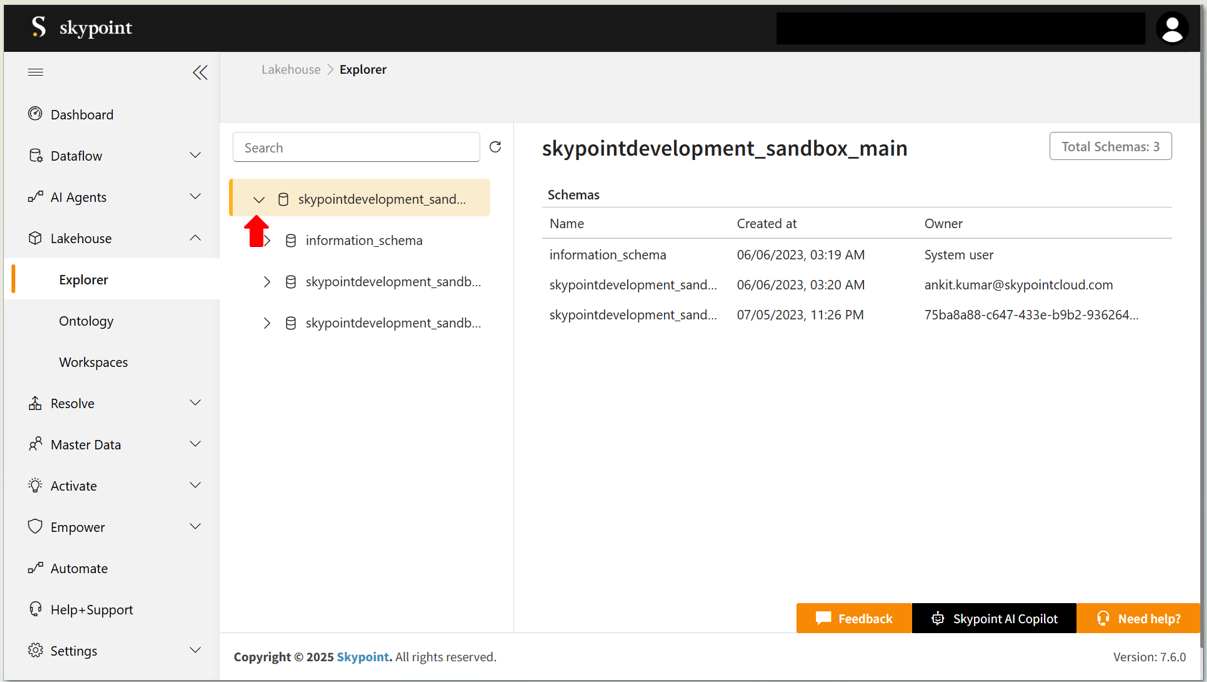
- Then Click on the Schemas drop-down menu to see tables.
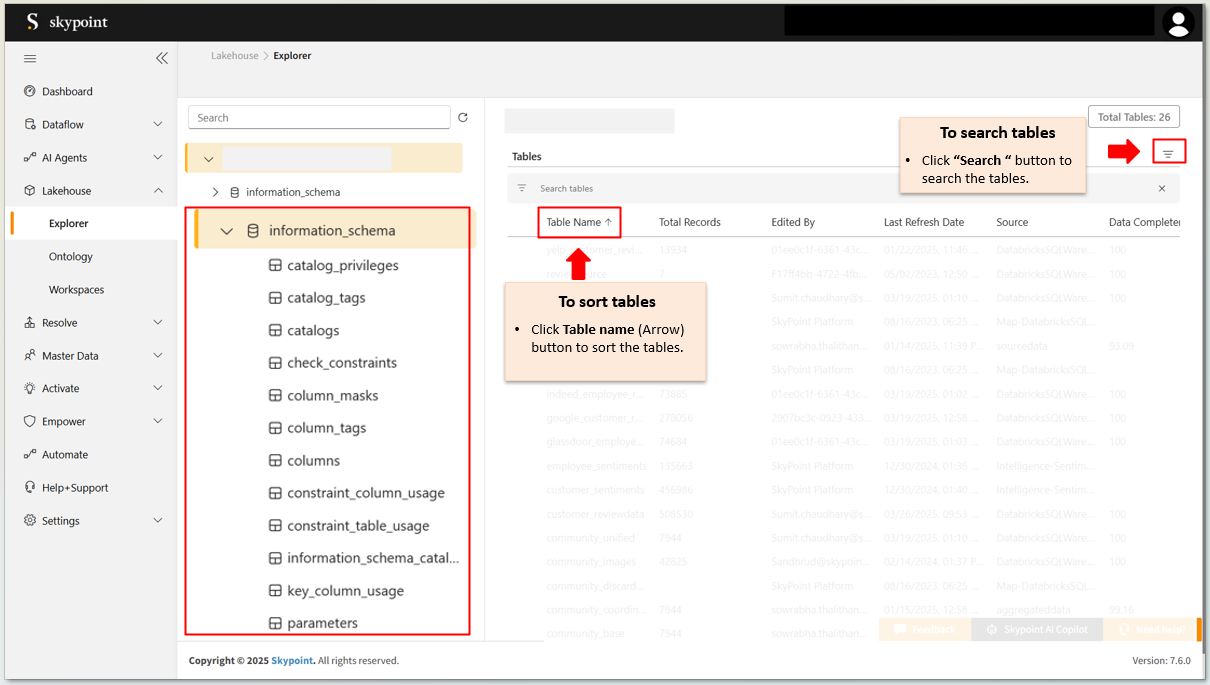
- Click on Search button to search the tables.
- Then, Click on Table name (Arrow) button to sort the tables.
In the Explorer window under Schema, tables are organized into three layers: Bronze, Silver, and Gold. Each layer is represented by an icon-Bronze, Silver, or Gold, Indicating the data layer of a table:
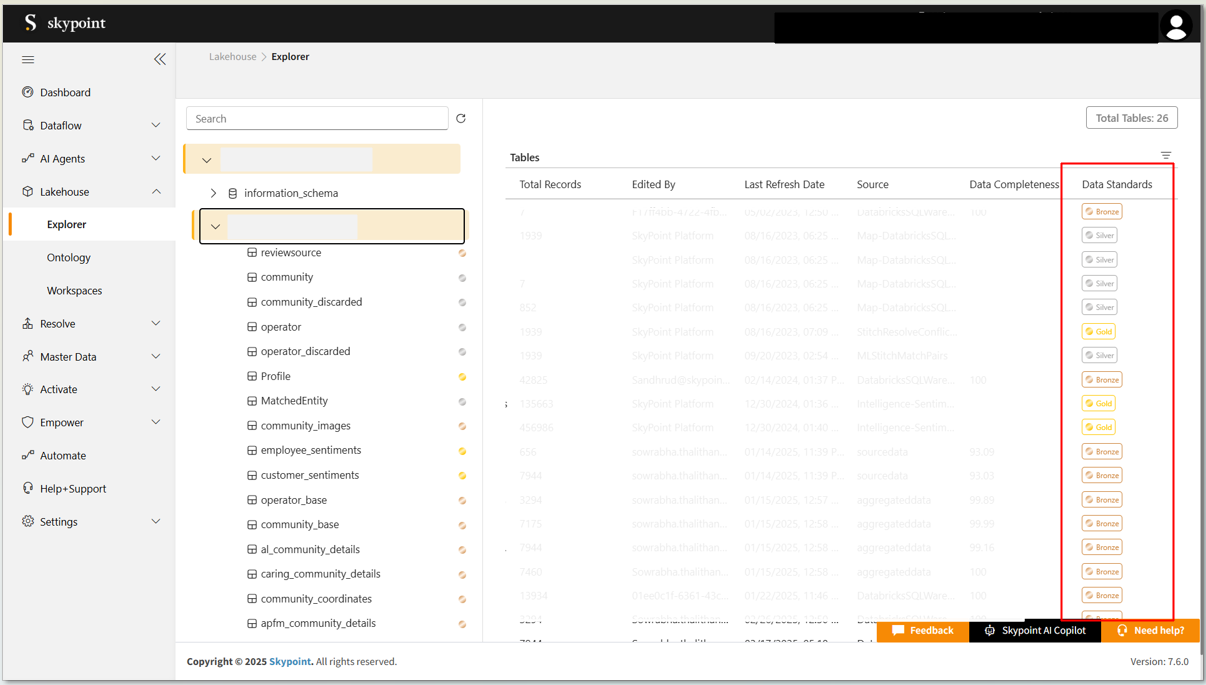
- Bronze – Tables of raw data ingested from various sources in the Dataflow with every light transformation.
- Silver – Refined and transformed view of the data for example after Map in the MDM / Stitch process.
- Gold – Consumption and business level aggregate tables such as Profiles (Customer, Employee, Organization etc.), Timelines, Audience, and Metrics.
| Item | Description |
|---|---|
| Table Name | The name of the tables. |
| Total Records | The number of rows of that individual database. |
| Edited by | The user who updated the imported data to formulate a processed one. |
| Last Refresh date | The date and time when the database were last updated. |
| Source | Type of data source such as connectors that ingested the data. |
| Data Completeness | Indicates the comprehensiveness of the data. |
| Data Standards | The layers of data present in table. |
- Select a Table to know more about the attributes and the data.
- The Attributes tab is opened by default and shows a table.
In the Attributes page, you will see a tabular representation of all the attributes present inside that entity with their details.
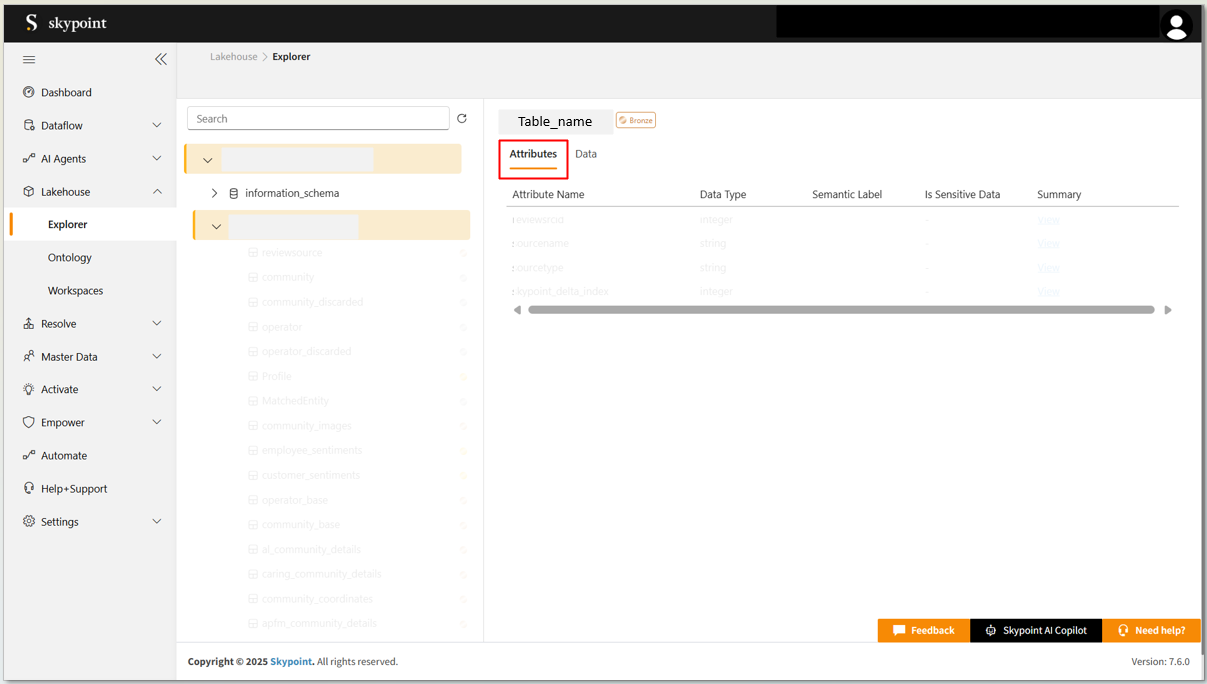
| Item | Description |
|---|---|
| Attribute Name | Shows name of the attribute. |
| Data type | Shows data type such as String or Integer. |
| Semantic Label | Describes the attribute. |
| Is Sensitive Data | Use this property to classify Semantic Labels as Sensitive. |
| Summary | Indicates you with some important characteristics of the data, such as unique values, counts, nulls, missing values. |
- Select the Data tab to see the details about individual records of the entity.
- Click on Columns to customize the columns needed.
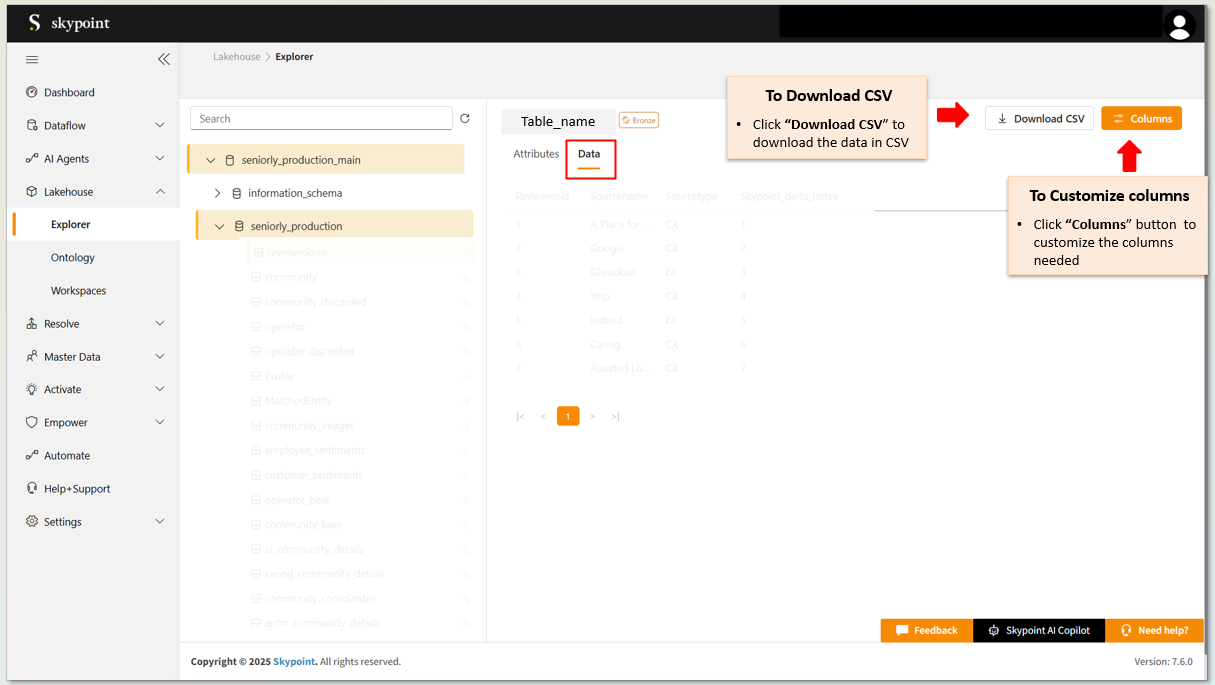
- .Click on Download CSV to download data in CSV
In the data tab, you will see a tabular representation of the data with its values. The Column option side panel drop-down fields have a search functionality with a search placeholder. The search functionality has been made easier for the user by adding a search feature on the Column Options drop-down fields. Users can type for any attributes in the Column Settings field. This avoids the scrolling required for the long list of attributes.
After a successful download, you can open the CSV file. You'll find detailed information about a list of attributes associated with the database.